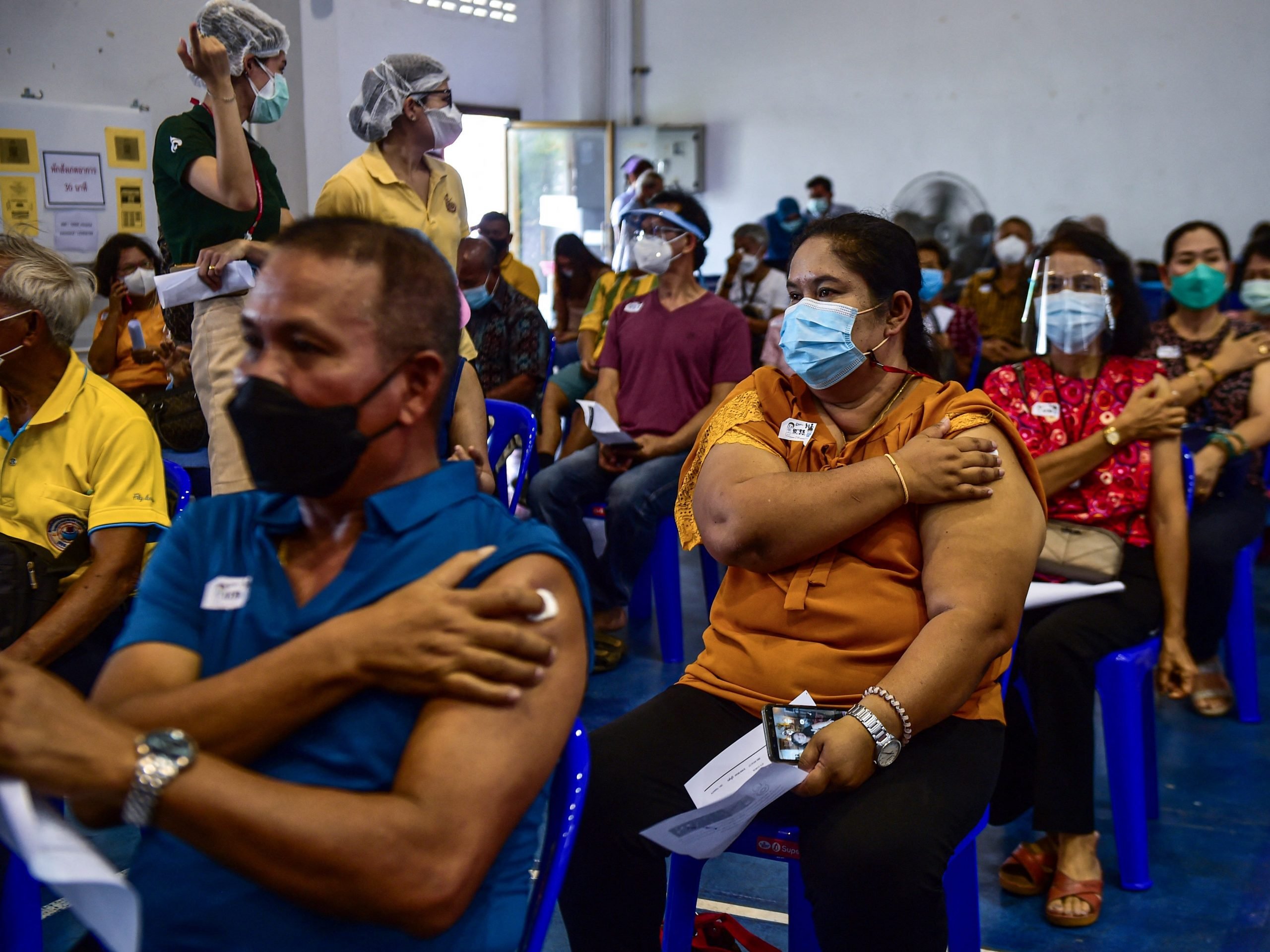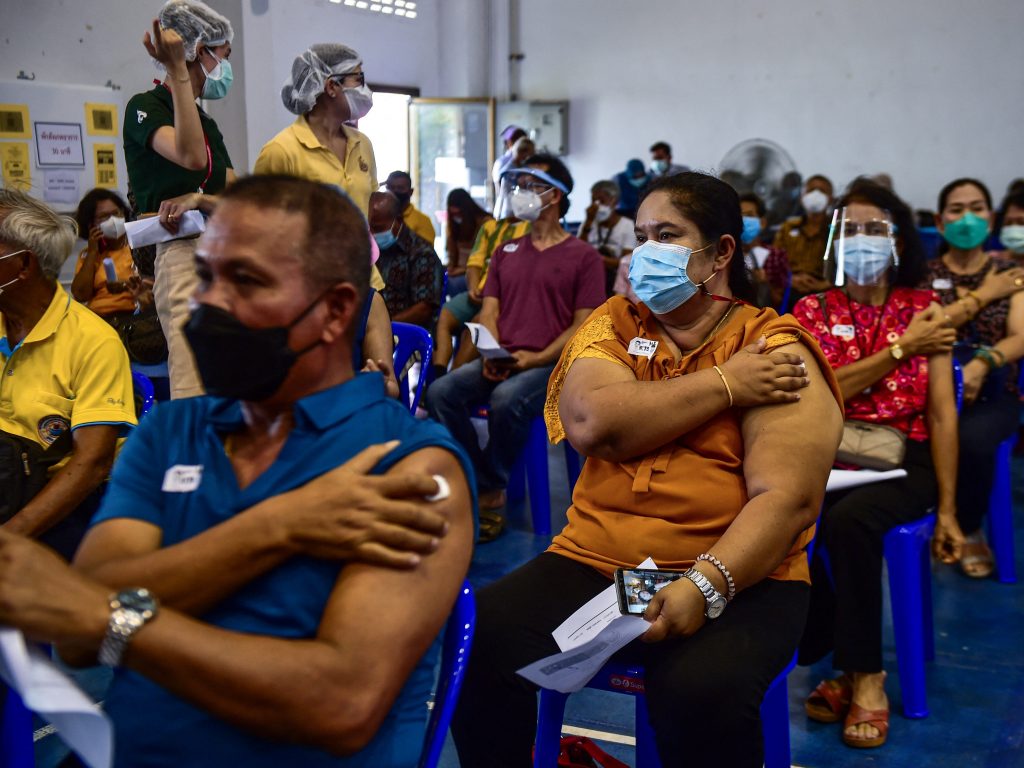
MADAREE TOHLALA/AFP/Getty Images
- A COVID-19 vaccine patch produced a better immune response than an injection among mice.
- The patch introduces the vaccine into the skin, where there are more immune cells than muscle.
- The vaccine will be tested in humans in 2022, the study lead author said.
An innovative vaccine patch could be more effective than an injection in providing protection against COVID-19, early-stage research suggests.
A study, led by researchers at the University of Queensland and published in Science Advances Friday, found antibodies in mice were forty times higher after two doses of a COVID-19 vaccine were given via a skin patch, compared with doses delivered via needle.
The patch triggered "significantly higher" blood antibody levels than an injection even after one dose, the study authors said.
The antibodies generated by the vaccine patch worked against the formerly-dominant Alpha and Beta variants in the lab, they said. They didn't test it against the highly infectious Delta variant that's most common in the US.
A single dose appeared to stop the virus from replicating in the brain and lungs, which was "notable" because the virus that causes COVID-19 can infect these body parts in mice and humans, they said.
Trials on humans will begin in 2022, Dr. David Muller, researcher at the Australian Infectious Diseases Research Centre who led the study, told AFP.
Muller said that generally, vaccines delivered to the skin produced strong immune responses because the skin is "full of immune cells." Muscle doesn't have many of the immune cells needed to react to the vaccine, he said, per AFP.
Burak Ozdoganlar, professor of engineering at Carnegie Mellon University, who has been working on patch vaccine technology since 2007 but wasn't involved in the study, told AFP that "less vaccine delivered precisely to the skin can activate an immune response similar to intramuscular injection." This could mean lower doses of vaccine would be required to inoculate patients compared with an injection.
The technology also promises easier distribution than existing COVID-19 shots, less medical waste and less chance of accidental needle pricks, the study authors said.
The so-called high-density microarray patch (HD-MAP) is a one-centimeter-squared patch with about 5,000 spikes coated in vaccine. They're "so tiny you cannot see them," Muller told AFP.
The patch is applied to the skin in two minutes, using an applicator that looks like a hockey puck. Muller told The Times of London that the sensation of getting vaccinated is "a lot like a good 'flick'."
The vaccine that was used on the patch, called HexaPro, uses a protein to trigger the immune response, and was originally developed by scientists at the University of Texas. Separate clinical trials of the vaccine on humans - delivered by injection - have begun in Vietnam and Thailand.
Muller told the New Scientist that his team wanted to "come up with an alternative that would be stable long enough to go that last mile, especially in resource-limited settings."
The study authors said that after the vaccine was applied to the patch, it appeared to be stable at room temperature for up to a month. Existing COVID-19 vaccines from Moderna and Pfizer were stable for between two hours and a week at the same temperature, they said.

